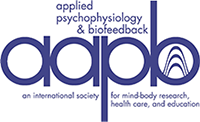The Promise and the Limits of Biofeedback-Assisted Rehabilitation Following Stroke
Surface electromyography for the treatment of stroke patients has fallen into disfavor in recent years. This paper reviews some of the history of electromyographic biofeedback for stroke and discusses some of the factors contributing to its decline. Data from a stroke patient are presented to illustrate some of the difficulties in working with this population.Abstract

Photo of flexor synergy.

Photo of electrode placements.

Seated ankle dorsiflexion and eversion with knee flexed.

Dorsiflexion and eversion “flicks” in seated position.

Repeated cycles of brief dorsiflexion and eversion in a patient with a peripheral nerve injury.

Seated combination training of ankle dorsiflexion and knee extension.

Additional trial of seated combination training with an improved pattern of motor recruitment.

More combination training.

Contributor Notes
